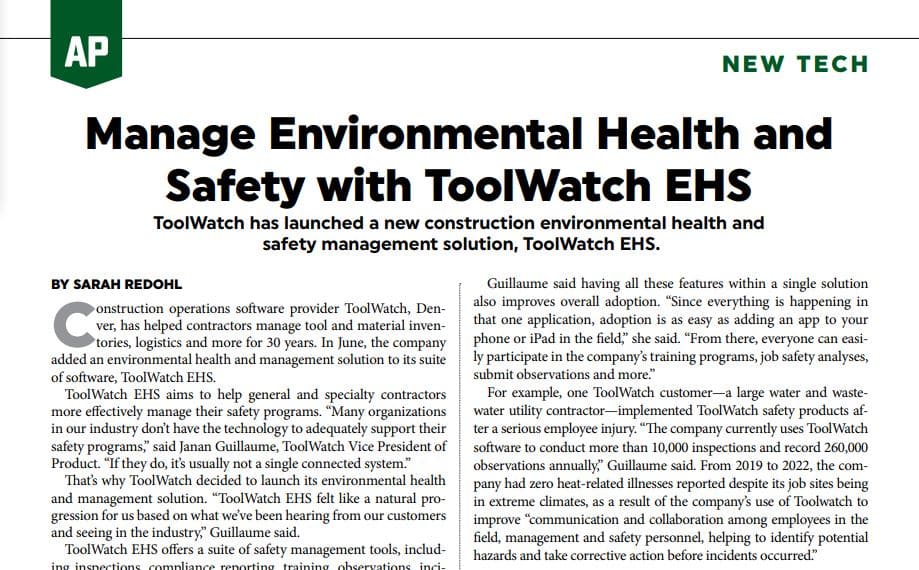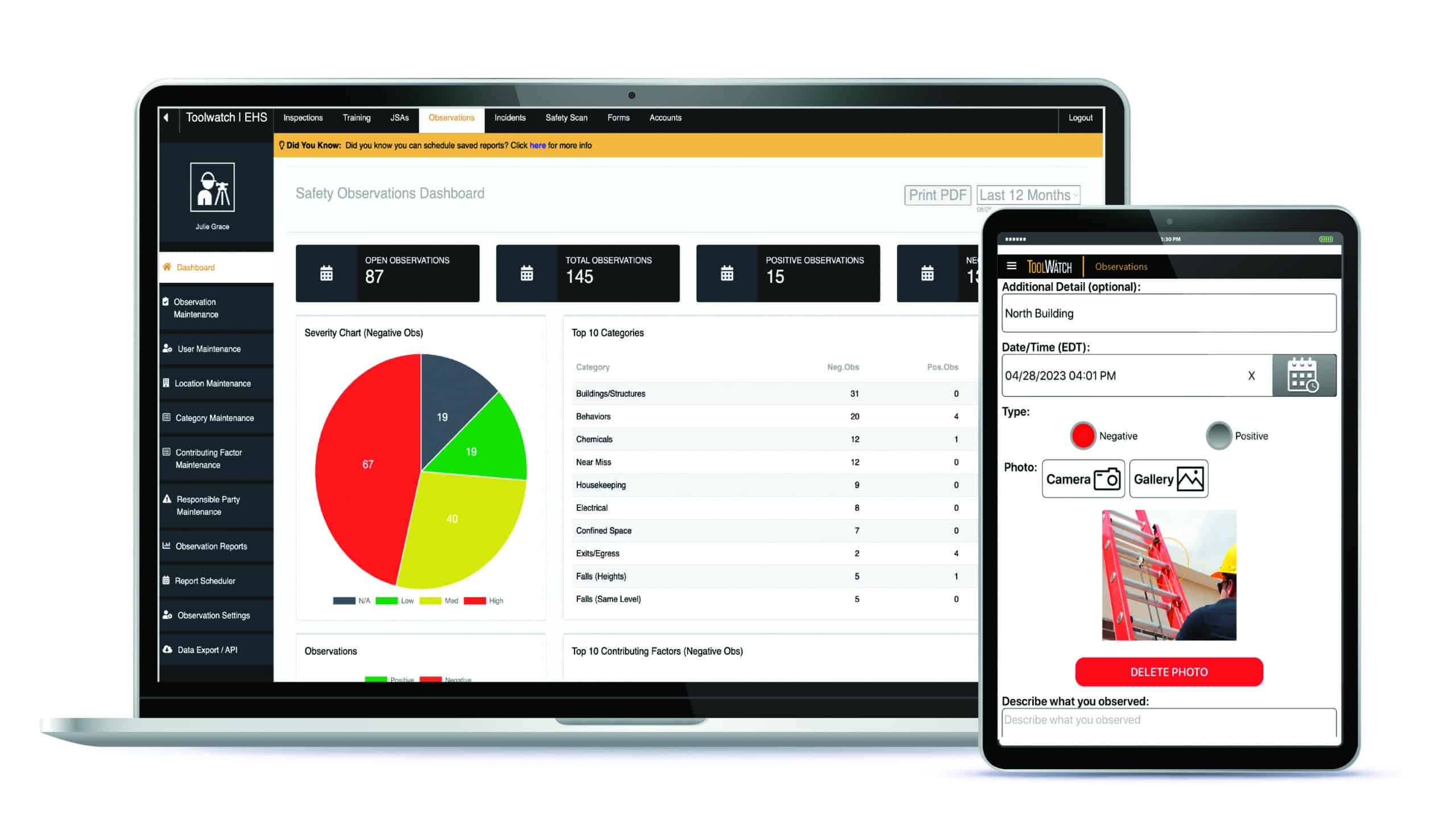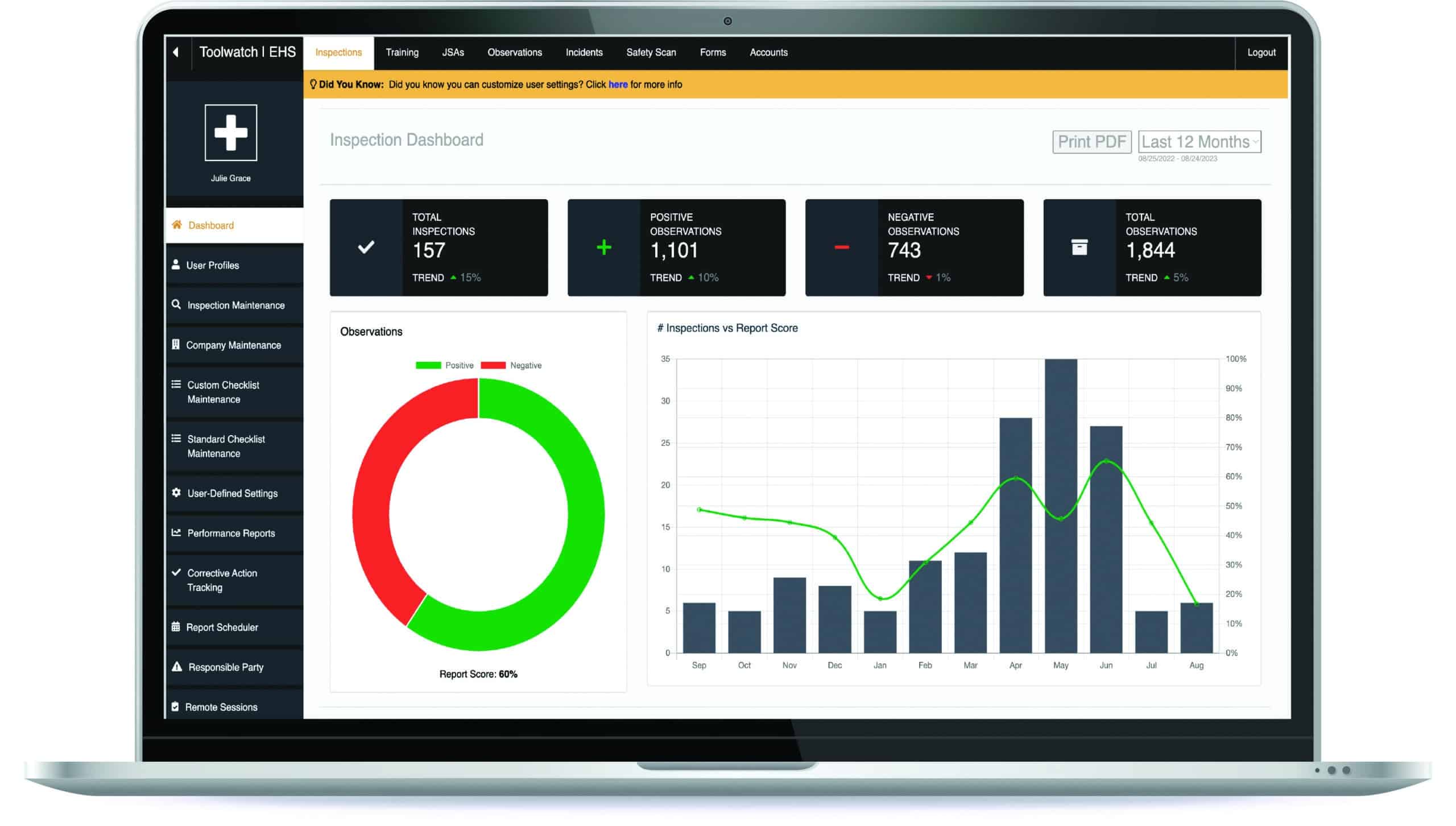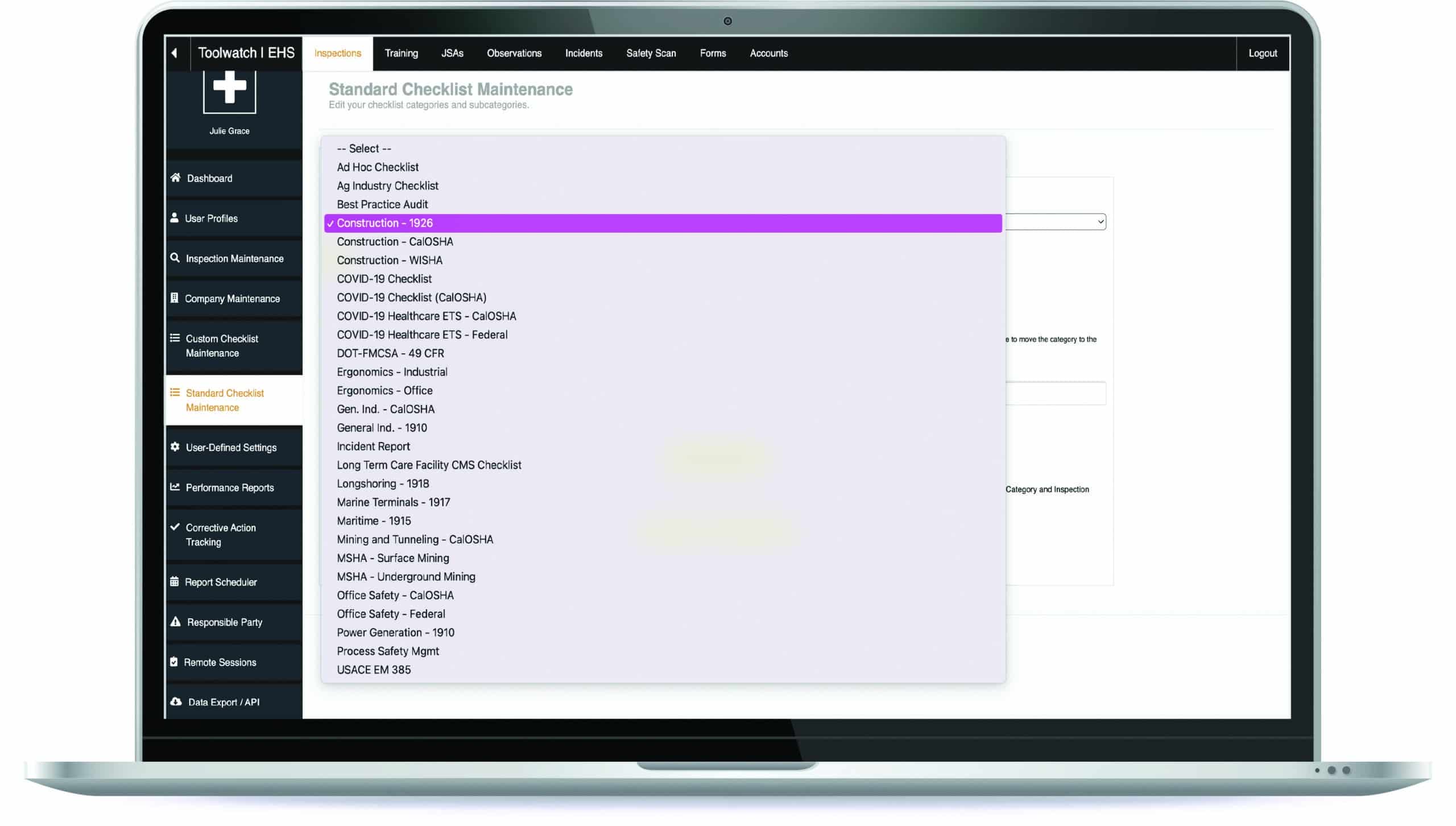Manage Environmental Health and Safety with ToolWatch EHS
BY AsphaltPro Staff

Construction operations software provider ToolWatch, Denver, has helped contractors manage tool and material inventories, logistics and more for 30 years. In June, the company added an environmental health and management solution to its suite of software, ToolWatch EHS.
ToolWatch EHS aims to help general and specialty contractors more effectively manage their safety programs. “Many organizations in our industry don’t have the technology to adequately support their safety programs,” said Janan Guillaume, ToolWatch Vice President of Product. “If they do, it’s usually not a single connected system.”
That’s why ToolWatch decided to launch its environmental health and management solution. “ToolWatch EHS felt like a natural progression for us based on what we’ve been hearing from our customers and seeing in the industry,” Guillaume said.

Any employee can make an observation—negative or positive—at any time, though it’s possible to set roles for different users.
ToolWatch EHS offers a suite of safety management tools, including inspections, compliance reporting, training, observations, incidents, job safety analyses, custom safety forms, and a dashboard for administration, data analysis, and reporting. And, in the fall of 2023, ToolWatch launched a new feature called Site Safety Plan.
ToolWatch has approximately 70 customers in the asphalt and paving space.
Deliver Real Benefits
ToolWatch EHS aims to improve safety by streamlining communication, digitizing paper processes, simplifying the adoption of a company’s safety plan and aggregating information into actionable reports.
By delivering field safety data to the back office in near real-time, decision makers can identify and mitigate safety risks before they lead to incidents. Furthermore, by making all critical safety documents accessible through the app, field personnel and safety managers have quick, easy access to the right versions—and most recent version—of inspection documents, forms, etc.
“[Information] quality and traceability are super important in any safety program,” Guillaume said. “ToolWatch EHS centralizes that for the user, making it easy for everybody to see what’s going on without having to scrounge around a filing cabinet or a coworker’s desk to find what they need.”
Eliminating paper by digitizing safety information not only makes the information more accessible, but also saves time. “Managing paper is a job in and of itself,” Guillaume said. Furthermore, by digitizing these processes, ToolWatch EHS gives safety directors insight into employee adoption of the safety program. “With a paper-based process, you don’t know whether people are participating and you’re not sure who’s doing what.”
Guillaume said having all these features within a single solution also improves overall adoption. “Since everything is happening in that one application, adoption is as easy as adding an app to your phone or iPad in the field,” she said. “From there, everyone can easily participate in the company’s training programs, job safety analyses, submit observations and more.”
For example, one ToolWatch customer—a large water and wastewater utility contractor— implemented ToolWatch safety products after a serious employee injury. “The company currently uses ToolWatch software to conduct more than 10,000 inspections and record 260,000 observations annually,” Guillaume said. From 2019 to 2022, the company had zero heat-related illnesses reported despite its job sites being in extreme climates, as a result of the company’s use of Toolwatch to improve “communication and collaboration among employees in the field, management and safety personnel, helping to identify potential hazards and take corrective action before incidents occurred.”

The Details of ToolWatch EHS
The ToolWatch EHS app has seven primary modules: inspections, forms, training, job site analysis, incidents, observations and scan.
With detailed inspection checklists based on OSHA 1926, incident report logs based on OSHA forms 300/301 and employee training record tracking, ToolWatch EHS aims to ensure that job sites meet applicable regulatory standards.
The platform can also be used to house and complete a variety of safety forms, including ones pre-built by ToolWatch and custom forms created by users. According to Guillaume, common customer-created forms include Vehicle Inspection Reports, Superintendent Daily Reports and Disciplinary Action Reports. “During the pandemic, several customers used the Forms module to create forms that documented employee exposure risk,” she said.
The app also houses training resources, including Toolbox Talks prepared by ToolWatch and those created by the customer. “You can really tailor your training program to each job site,” Guillaume said.
With ToolWatch EHS’s job site analysis module, users can identify potential hazards, as well as suggest, assign and track resolutions to any hazard on ToolWatch’s web-based dashboard. The app can also be used to submit observations.
“Observations are a good way to engage frontline workers,” Guillaume said. “They’re a good way to encourage employees to check their environment for safety issues and to collect data from the job site.”
Any employee can make an observation—negative or positive—at any time, though it’s possible to set roles for different users. “You’ve got some granularity in terms of creating roles and permission sets so that you can manage who can do what and who’s responsible for what,” Guillaume said.
ToolWatch EHS can also be used to report, record and investigate any incidents. “The incident feature is more granular than an OSHA incident report,” Guillaume said, adding that it can be used to track the details of the incident, witness information, medical treatment information and more. “It shows how your organization is managing the health and safety of your workers beyond compliance.”

The final module of ToolWatch EHS is the ability to use a mobile device to scan and inspect safety equipment. “The quicker you can get accurate information about any asset on the job, whether it’s a safety harness or a backhoe, the better you’ll be able to manage your equipment,” Guillaume said. Users can also create a service event to address any maintenance issues. “We’re really tying all of those workflows together to break down the manual steps required.”
Although some customers opt for ToolWatch EHS only, Guillaume said more customers are taking advantage of the entire ToolWatch suite of solutions in order to integrate safety and compliance with other job site workflows and data. “Working across our suite of tools really bolsters the value a user gets out of the platform,” she said.
Ever-Expanding Features
In the fall of 2023, ToolWatch launched a new Site Safety Plan feature that allows users to set a specific safety program based on project or job site. “Every job site is going to be different,” Guillaume said. “Our Site Safety Plan feature makes it easy to jump start a site-specific safety program tailored to the needs of a specific job site.”
The company is also investigating the ability to send users push notifications, for example, to request safety observations from employees. “We want people to understand the value of their company’s safety program and see engaging in the safety program not as a burden but as a natural part of their day on the job site that benefits everyone,” Guillaume said.
Ultimately, ToolWatch EHS aims to go beyond compliance, she added. “A company’s safety director shouldn’t be isolated from what everyone else is doing,” she said. “We’re trying to break down those barriers to become more efficient and get in front of potential risks at a job site.”
Hazard How-To
To assign a corrective action to an identified hazard, an administrator first creates a list of possible responsible parties in the ToolWatch EHS Inspections module. When the inspector finds a hazard, he or she selects a responsible party from the list to whom the corrective action is assigned. An automated email then goes out to that person that includes a link to the action item. If the responsible party does not respond after a week, the system continues to generate weekly email reminders for up to four weeks. If the hazard was designated as serious or critical, email reminders go out more frequently. Reports are also sent to administrators updating them on open, closed and pending corrective actions daily, weekly or monthly based on their settings.
